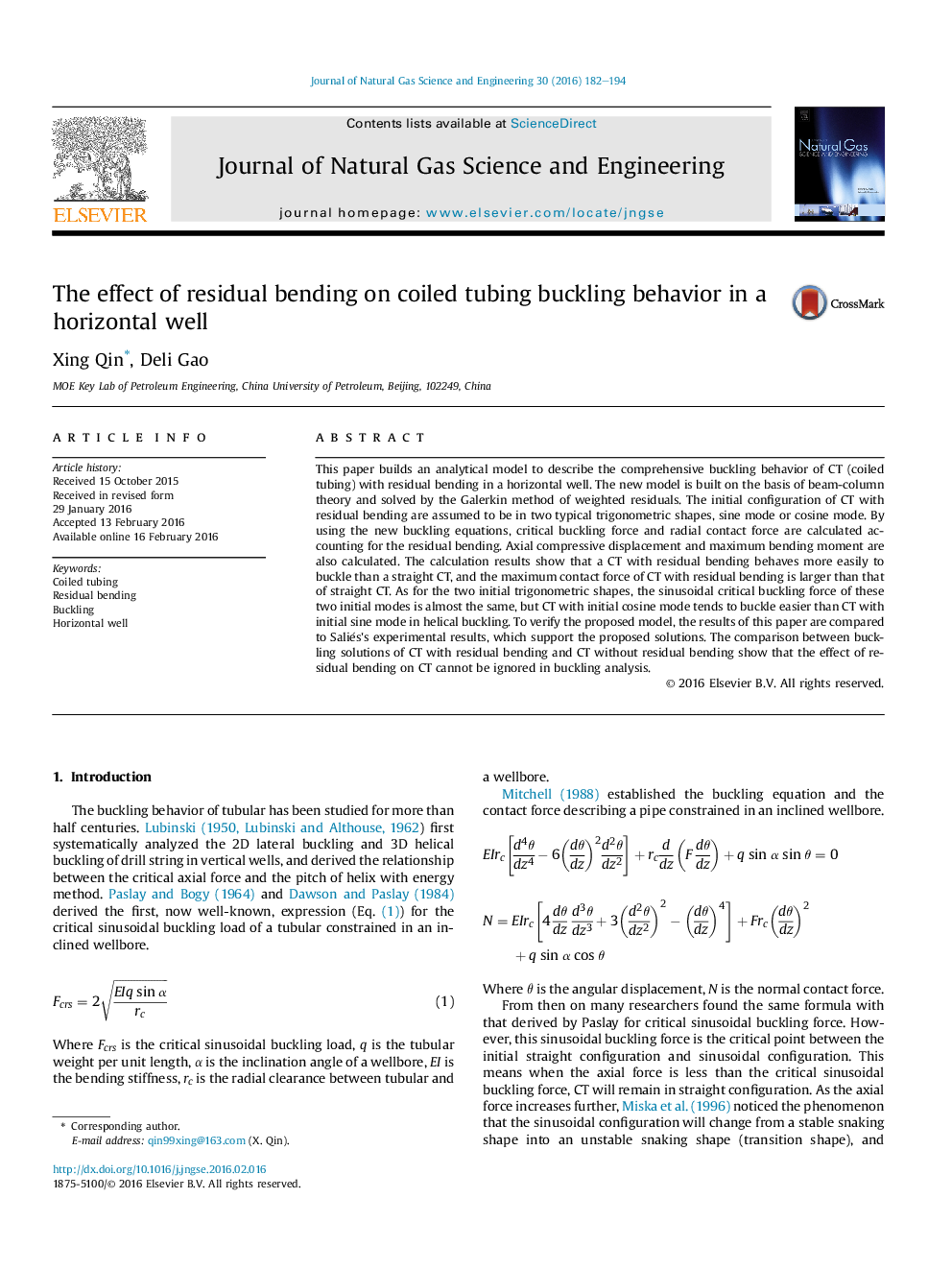| Article ID | Journal | Published Year | Pages | File Type |
|---|---|---|---|---|
| 1757162 | Journal of Natural Gas Science and Engineering | 2016 | 13 Pages |
•A new model to describe buckling behavior of CT with residual bending is proposed.•CT with residual bending behaves more easily to buckle than straight CT.•The maximum contact force of CT with residual bending is larger than that of straight CT.•The effect of residual bending on CT cannot be ignored in buckling analysis.
This paper builds an analytical model to describe the comprehensive buckling behavior of CT (coiled tubing) with residual bending in a horizontal well. The new model is built on the basis of beam-column theory and solved by the Galerkin method of weighted residuals. The initial configuration of CT with residual bending are assumed to be in two typical trigonometric shapes, sine mode or cosine mode. By using the new buckling equations, critical buckling force and radial contact force are calculated accounting for the residual bending. Axial compressive displacement and maximum bending moment are also calculated. The calculation results show that a CT with residual bending behaves more easily to buckle than a straight CT, and the maximum contact force of CT with residual bending is larger than that of straight CT. As for the two initial trigonometric shapes, the sinusoidal critical buckling force of these two initial modes is almost the same, but CT with initial cosine mode tends to buckle easier than CT with initial sine mode in helical buckling. To verify the proposed model, the results of this paper are compared to Saliés's experimental results, which support the proposed solutions. The comparison between buckling solutions of CT with residual bending and CT without residual bending show that the effect of residual bending on CT cannot be ignored in buckling analysis.
